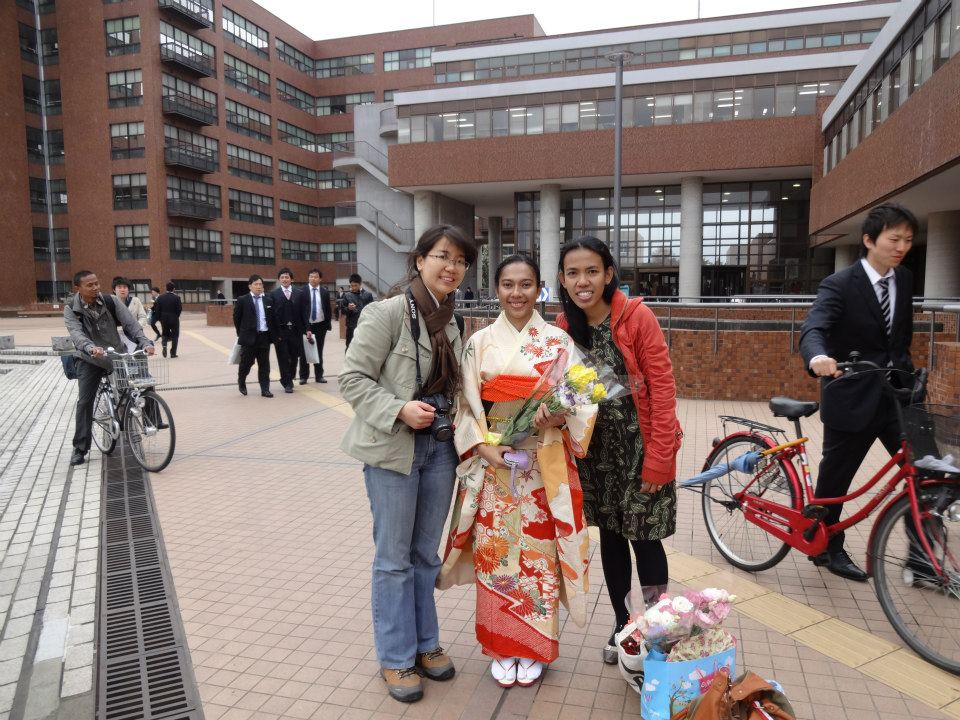
ASK
ME

REGISTER
NOW

Hello everybody!
I am Florentin Devina. I was enrolled as FTb’s student from 2006 until April 2010. I am currently a graduate student at University of Tsukuba, Tsukuba Science City, Japan.
My university is not probably as well-known as Tokyo University, Osaka University, Kyoto University, etc. However, University of Tsukuba is in the top 10 list and one of the Japanese universities which have the most affiliations, especially with Japanese National Institute. As in my case, my professor’s laboratory is not in the campus area, but at the National Institute of Advance Industrial Science and Technology (AIST).
I just finished my 1 year-research student program and start my 1st year as a master student this April. Now, I would like to share a brief explanation about the Japanese education system for foreign graduate students, and how to get here!
First, what is “Research Student” program? I think this is one of the uniqueness in Japanese education system. Before that, there a few important questions:
Do you have a bachelor degree from outside Japan? Yes (?).
Do you feel that you can’t speak Japanese, or at least you don’t have that much confident with your proficiency? Yes (?).
Are you not admitted in the university as a Master Student yet? Yes (?).
Based on those questions, these are the functions of the “Research Student” program:
The “Research Student” program has 3 lengths of time; 3 months, 6 months, or 1 year. The length of the program depends on our scholarship (or our financial ability – if we pay it by yourself) or on our professor’s decision. As a note, most of universities allow the students to prolong the program up to 2 years in total.
Now, there are some necessary additional things we need to know. It’s important to note that Japan starts the new terms on April (for spring) and October (for autumn). Most of the scholarships open their application on March-May and send their students in April the next year. Unless we get the scholarship from Indonesian government or a U to U scholarship (which sometimes send us for autumn term), it usually needs a nearly one full year of preparation.
For the application, we need to prepare:
Now, the rest of the flow is nearly the same as the scholarship from other countries; document screening, written test, and interview. All we need to do now is do our best and pray for a good luck.
The plus point of studying in non-English-speaker countries is the opportunity for us to learn at least one new language. We could always learn the language in Indonesia, but isn’t it always said that the best place to learn a language is at the origin? We could boost ourselves more for not only being a bilingual speaker, but tri-, quarto-, penta-lingual speaker.
So, what are YOU waiting for?!
Cheers,
Florentiin Devina (FTb 2006)